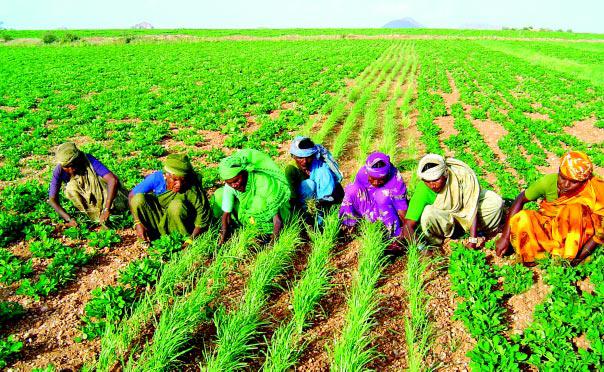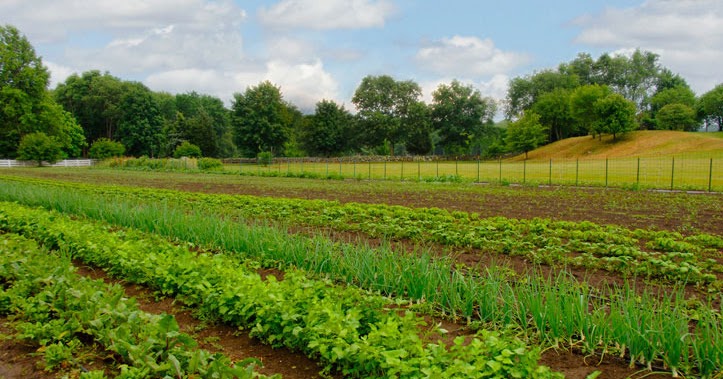What are the 2 Main Goals of Farm Management?
Quick summary: The farming industry has gone through a drastic change over these decades, from expanding global trades to the adoption of eco-awareness, it has seen it all. This requires a farming system that sticks to its roots of primary objectives while maintaining demands of production and economic and sustainable need. All this depends on the decisions of farm managers who allocate resources and manage the farm ecosystem based on data, requirements, availability, forecasts and many more.

Farm management
It is a management method for organizing and carrying out farming-related decisions, such as those regarding crops, livestock, aquaculture, agroforestry, etc., to maximize productivity and profits. It utilizes the available resources for profitable, sustainable, and productive farming by allocating resources, developing strategies, and planning operations.

According to Bradford and Monson, “farm management is a branch of agricultural economics, which deals with wealth earning and wealth spending activities of the farmer in relation to the organization and operation of the individual farm unit for securing the maximum possible net income”.
Optimizing farm management
Farm management majorly depends on farming decisions. Traditionally all such important decisions were made with the help of experience and judgments. Now with the adaptation of the different farming methods, excessive volume targets and capital-intensive systems have created a need to optimize farming decisions. This enables a well-organized farming system that better integrates resources to be utilized efficiently for maximum volumes at minimal expense.
How to take better farming decisions
Decisions are based on various facets of farming principles and their objectives. Let us understand by considering a few factors affecting these decisions.
Farmland utilization
The purpose of land management is to derive a twofold effect; one is to maximize its production and the other is to improve it. An increase in population and extensions of global markets have created a huge demand for food, which has pushed the agricultural industry to develop different solutions.
Land management today has enlarged its scope to cater to the issues of sustainability, demand completion and the protection of the ecosystem. It focuses on the assessment of the land and its water sources, different uses of land and the best choice of adoption for land use. All of this depends on the plan and its execution. To plan, is a difficult task because a farm manager has to decide on factors of needs, like production, profit, national objectives, etc, or lean on operational factors such as budget, resource availability, methods, etc. Therefore the need for data collection and database has its prominence. Data is analyzed and a plan is created keeping in mind both farmers’ and society’s needs.
Cropping pattern
A cropping pattern refers to the area of land that is used to cultivate various crops at different points in time. It concentrates on the time of cultivation and its arrangement.
In land management, crop patterns are determined by physical conditions like rainfall, climate, temperature, technology in hand, etc and a few economical and social factors. A few types of cropping patterns are listed below.
Mono cropping: refers to growing a single type of species at a time. This can reduce the fertility and structure of soil over time.
Mixed cropping: here, two or more crops are grown at the same time on the same land. Crops complement each other when paired properly lowering the risk of failure and consuming fewer fertilizers.
Crop rotation: similar to mixed cropping but here, different crops are grown at pre-planned successions. This captures soil nutrients while maintaining its physical and chemical nature.
Intercropping: row patterns are created in which different crops are cultivated in rows on the same land. For example, a row of maize is grown along with three rows of soybean. This helps decrease the spread of disease, better pest management and maximum land utilization.
Labor employment and utilization
Labor management is one of the key aspects of farming decisions. Labors are hired based on skill, location and availability for all levels of activities such as traditional labor, contract workers, overtime workers, management, semi-skilled service, etc.
Labor management is performed based on comparing labor efficiency with different tasks, this helps to manage the workforce efficiently at minimal opportunity cost. The number of workers required for a particular task along with paring of labor with land or machinery is determined based on efficient combinations and profitability.
Capital Investment
The most important of the management decisions that a farmer takes is the investment decisions. These investments could be in the form of capital assets as purchase of land, new piece of equipment etc. Investments in capital assets involve one large investment at the beginning with multiple returns spread over the remaining lifetime of the asset. The investments are evaluated through capital budgeting. A proper capital investment analysis should take inflation and risk into account.
Optimal resource utilization
Data about land, water, labor, plants, animals, and renewable resources are gathered to plan their exploitation in an efficient way that will produce the optimum result. Production per unit of resource input can be increased from the optimum utilization of available resources. The number of resource availability is merged with requirement constraints for the formulation of an optimal utilization formula.
Farming decisions on resource utilization are based on various principles like,
- The minimal amount of essential supply of resources required for the full development of the crop is determined along with its necessary inputs.
- There will always be variable inputs that derive the same level of output; therefore the substitution cost should work with the principle of least cost.
- Labor, land and capital are interchanged in volumes to derive the efficiency index which provides the best possible mixture to produce the maximum output.
Two main objectives of farm management
How to maximize production and get maximum profit?
Identifying the relative efficiency between agricultural input and output is one of the greatest techniques to examine profits over production. As a result, the idea of variable proportion is created, offering farmers the most productive combinations. Different input levels can also be understood with the impact of output variation. Data on labor, plants, animals, renewable resources, and water are acquired to organize their exploitation in a way that would yield the best results.
Thus, a well thought farm plan helps for a sustained net income for a long period.
- Farming methods and techniques have to be studied to determine the best possible option that fits the situation at hand.
- Should have foresight of demand fluctuations and should maintain flexibility for improvisation of plans.
- Allocation of recourses available should be done in the best possible manner for an efficient outcome.
- A good farm management system provides various tools, data and engagement, putting decision-makers in a better position.
How to minimize the cost of production?
Cost often refers to the out-of-pocket expenses for the inputs needed to produce commodities, such as crops, livestock, etc. There are short-term and long-term costs that vary depending on the type of produce and gross return.
A cost management system focuses mainly on planning and forecasting different scenarios which might affect management activities and regulate costs in different circumstances. Therefore, improving management decisions at all farming levels based on technological advancements is carried out as the principle of budgeting. A well-designed system aids in the understanding and prediction of processes, reducing unnecessary labor, pesticide, and chemical use, and promoting sustainable agriculture. The budget acts as a cost management tool that defines costs at different levels and their under and overruns, this makes it possible to make informed economic decisions on production and development all through the farm diversity.
Conclusion
The farming industry has gone through a drastic change over these decades, from expanding global trades to the adoption of eco-awareness, it has seen it all. The traditional farm management system had to be ramped up to cope with these rapid changes, and today farm management system has stood tall, overcoming all such barriers while rooting strongly to its primary objectives of increasing the volumes of production while reducing the cost.
With the use of databases and technology, farming decisions have become considerably more accurate, reducing losses and wastage while focusing on sustainable and lucrative approaches.
TraceX’s Farm Management solutions turns data into profitable decisions in real-time.
FREQUENTLY ASKED QUESTIONS

